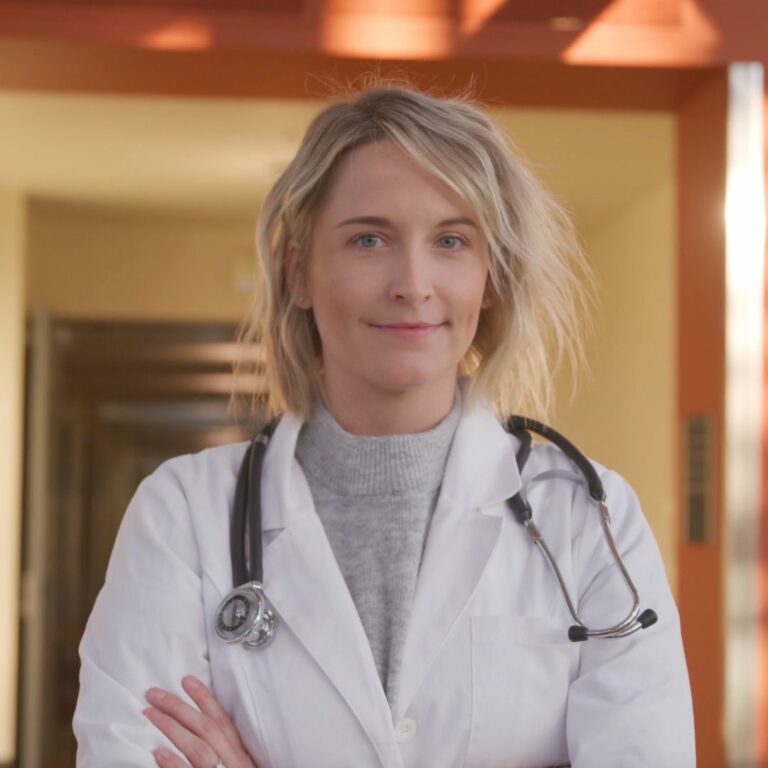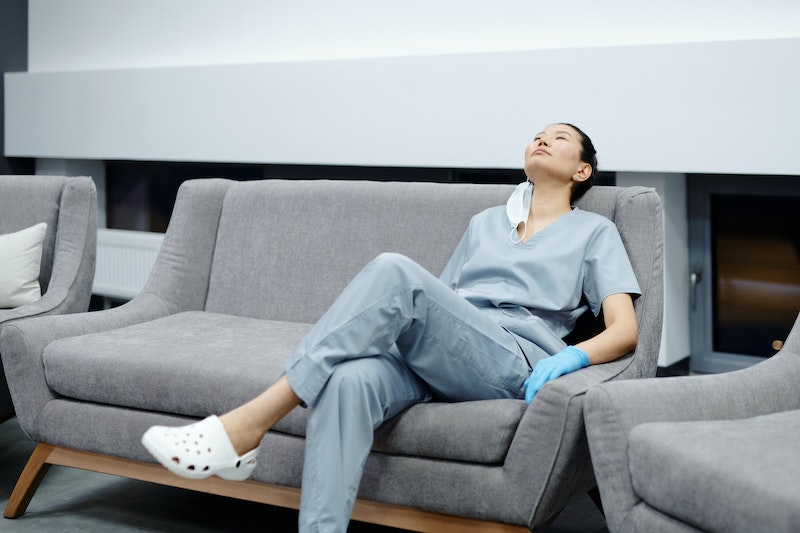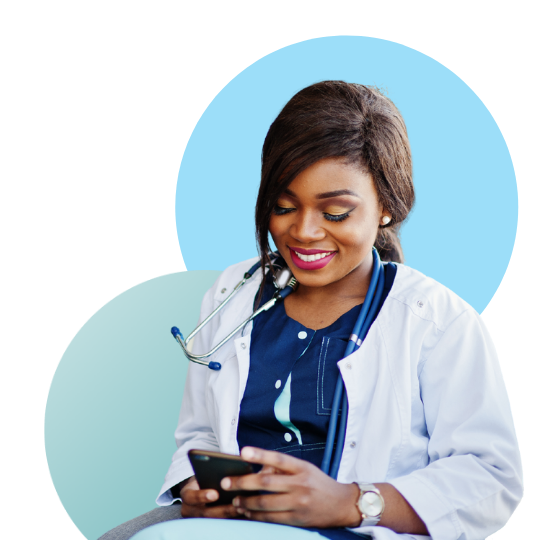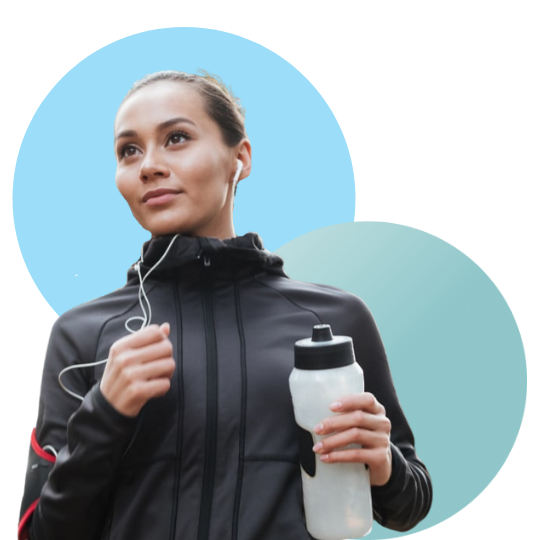Podcasts and their use in medical education is a fast-growing medium to deliver content to healthcare professionals in a way that is more convenient and accessible to the learner than ever before.
This trend is especially true for Millennial clinicians, often described as the ‘Digital Native’ healthcare professional, and they are seeking new approaches to their continuing professional development that align with their preferences for digital learning.
In this review article, we seek to better understand the needs of the young healthcare professional as it pertains to their continuing medical education and to assert that podcast medical education meets the unique requirements of this important group of medical professionals.
Who are Digital Natives?

Digital Native clinicians grew up with smartphones and are tech savvy. Especially when using their mobile device, Digital Natives:
- Complete day to day tasks such as banking, shopping, dating, and transportation
- Engage frequently on social media platforms,
- Consider speed to be an important characteristic of their digital experience, and
- Multitask freely between work and entertainment

In addition, according to multiple sources, the professional millennial workforce is becoming a large segment of healthcare workers.
- A Gallup report stated these Digital Native, millennial professionals have now become the largest generation in the labor force, and by 2025, millennials will make up 75% of the global workforce.3
- In another study from www.younginvincibles.org, entitled: “Where Do Young Adults Work?”, the leading profession among Millennials is the Healthcare Industry4
.
- An Indiana University Health report cites that over 50% of nurses and 30% of physicians are millennial healthcare professionals and this shift will only grow in the coming years.5
There will be a shortage of up to 3.2 million health care workers by 2026.
30% of healthcare professionals are considering leaving the profession due to burnout and stress
The US will face a shortage of 133,000 physicians by 2033
There will be a shortage of up to 3.2 million health care workers by 2026.
30% of healthcare professionals are considering leaving the profession due to burnout and stress
The US will face a shortage of 133,000 physicians by 2033
What do these demographic shifts mean for the Continuing Medical Education industry?
More specifically, how can content providers reach the increasingly busy, Digital Native clinician with an approach that can both deliver a high yield educational experience and appeal to their preference to learn via a mobile device?
According to the ACCME 2020 Data Report,7 the majority of CME learner interactions were Internet-Based activities including both live and enduring online content. Although this shift was dramatically impacted by the Covid-19 pandemic effect, the movement away from live courses to online activities has been happening for years. The vast majority of this content is delivered either through a live-webinar or hosted on a learning management system so that the learner can consume content on their computer.
However, these online activities require the learner to set aside time away from their personal or family activities, search for interesting and relevant content, and view the activity on their computer in order to complete mandatory educational requirements. Although this content is delivered digitally, it is not distributed in a way that the busy, Digital Native healthcare professional prefers. The ideal educational activity for the young, tech-savvy clinician who is overworked, stressed out, and ready to go home to their families is via a mobile platform that can be accessed anytime and anywhere.
How about podcast medical education?
Podcast medical education is a potential new medium that can deliver peer-reviewed caliber content to learners on-the-go. A growing body of evidence suggests that podcasts are underutilized as an educational tool and new opportunities are emerging for creators to take advantage of this fast-growing content medium.
Below are 4 reasons why medical education podcasts will take off!
1. Mobile audio is a fast-growing medium
According to the Infinite Dial,8 the premier study of trends and media usage, podcasting continues to grow at a rapid pace. Highlights of the report include:
- 162 million podcast listeners in the U.S.
- 80 million weekly podcast consumers
- Weekly listeners average 8 podcast episodes per week
In a study reported in Statista, there are also over 2 million podcasts with over 48 million episodes currently available.
Nearly 3 out of 4 podcast listeners say they tune in to learn something new, proving that the audio format is a desirable education medium by Digital Natives.
Because podcasts are so readily accessible on a smartphone and are where the majority of podcasts are consumed, educational podcasts can be streamed via headphones, in an automobile, as well as through home smart speakers. As these audio technologies continue to evolve, podcasting will follow a similar growth pattern.


2. Podcast medical education is in its infancy, but growing rapidly.
Over the last few years, podcast content targeted to healthcare professionals has grown exponentially and its popularity is exploding. For example, the American Family Physician Podcast boasts over 5,000,000 total downloads, and The Curbsiders Internal Medicine Podcast has grown to over 40,000 downloads per episode.
Current producers of medical podcasts include independent creators such as CardioNerds and Audible Bleeding, and they have amassed substantial listenership. Professional associations are getting in the podcast game including the Orthopaedic Trauma Association and the American Society of Reproductive Medicine as they capitalize on an approach to engage their members in new and creative ways. Academic medical centers including the Cleveland Clinic, Mayo Clinic, and Stanford as well as professional publications like JAMA and the Journal of Arthroscopy have added podcasts to their educational options to supplement their written publications.
Podcasting has the potential to democratize medical education much like YouTube has for videos, where anyone with a smart phone and access to the internet can create content. With such high demand for podcasts from Digital Native clinicians, it’s easy to imagine explosive growth of educational podcast channels over the next decade. The content is likely to come from traditional education providers such as Associations, Academic Medical Centers, and other CME creators. In addition, independent podcasters and popular social media influencers may disrupt the status quo by creating innovative educational experiences that attract the Digital Native learner.

3. Podcasts are convenient and affordable
According to a recent study by Cook et al9 in the BMC Medical Education Journal, the most frequently cited barriers to continuing medical education by physicians are time and expense.
This response is not surprising given that most CME is delivered either through live events or online activities meaning the clinician must allocate time to complete their requirement. The study also suggests that most physicians complete CME during personal time.
According to Centor in his paper entitled, ‘Medical Education Podcasts: Where We Are and Questions Unanswered, “Podcasting adds several potential benefits for learners. First, convenience allows learners to listen while cooking dinner, commuting to work, exercising, or engaging in other activities. In an era of increasing demands on physician time, this feature provides greater flexibility when compared to other learning opportunities. Listeners have identified podcasts as a more efficient and enjoyable way to keep up to date.”
With a podcast, the learner can listen and learn on-the-go rather than be tethered to a screen. According to a recent Nielsen report, as Covid-19 emerged, adults spend nearly 13.5 hours per day in front of some sort of screen.11
To quote Don Katz, founder of Audible, a great time to listen to content is, “when your eyes are busy, but your mind is free.”
For the young, overworked, stressed clinician, maybe it is time to abandon the screen, take a walk, and listen to an educational podcast.


4. Residents and trainees prefer podcasts over other learning formats
There exists a growing body of evidence to suggest that residents and students are utilizing podcasts at a very high rate.
A recent survey of 356 Emergency Medicine residents stated that 88% of respondents reported listening to medical education podcasts at least once a month. A second study of 226 residents identified podcasts as the most popular form of extracurricular education and prefer this learning method to textbooks, journals, and Google.12
Trainees also prefer podcasts over other learning modalities due to their informal and conversational tone as they ‘engender a sense of connectedness with other members of the profession’ according to Sargsyan in his recent paper, What Traditional Lectures Can Learn from Podcasts.13 The author further states, “The format creates a low-stress atmosphere that is less intimidating to learners. Podcasts create low-stakes dialogue that engenders a positive learning environment.”
The student population will soon enter the healthcare professional workforce with the ongoing habit of listening to podcasts as an important medium for their continuing professional development.
What formats work well for podcast medical education?
As in any medical education activity, content providers must begin with the objectives of the learner. What is the current knowledge gap and how will this activity remediate that gap? In addition, content providers should consider adult learning principles when designing the activity and take into consideration episode length and structure.
According to a report by Kaplan et al., What Traditional Lectures can learn from Podcasts,
“Most podcasts are also shorter than traditional lectures, and their preferred length of 15 to 30 minutes corresponds with the typical adult learner’s attention span. Users can now dictate the “who,” “what,” and “when” of their learning experience. These benefits align with Knowles’ theory of andragogy, empowering adult learners to plan their own content and ensure it is directly relevant.”
When reviewing popular medical education podcasts, some formats stand out and include:
Interviews with the author of recent published papers
Case discussions with an expert panel
Moderated debate and discussion
Panel discussion on updated clinical guidelines.
Resident board exam preparation discussions.
Interviews with the author of recent published papers
Case discussions with an expert panel
Moderated debate and discussion
Panel discussion on updated clinical guidelines.
Resident board exam preparation discussions.
Formats that are rarely seen include single-host, didactic lectures, which ironically is the most frequently utilized format in both live and Internet enduring content. The beauty of the podcast format is that the listener is invited into a casual conversation with experts, and they are made to feel connected to the host and guests in a way that didactic lectures simply cannot.
Educational limitations of current podcast platforms.
Although there has been rapid growth in the utilization of podcasts in medical education over the past few years, current open platforms are limited in their application to deliver a truly meaningful educational experience to learners:
Discovery is difficult. Although hundreds of podcasts targeted to healthcare professionals are available, discovery of new podcasts by clinicians is as popular platforms like Spotify and Apple have over 2.5 million podcasts. With tens of millions of episodes available, it is difficult for highly specialized clinically based content to be found. Searching for a specific clinical topic like COPD or congestive heart failure will likely yield unsatisfactory results for a physician given the sheer volume of content available.
Audio-only format: Because these platforms lack a visual component, episode format options such as case presentations or clinical guidelines are not possible, and learners would prefer access to visual content while listening.
CME compliance: Although some podcasts on open platforms like Apple or Spotify have begun to offer links to listeners so that they may complete CME requirements, the user experience is inconvenient and the ability to ensure compliance to ACCME guidelines such as activity completion, faculty disclosures, goals and objectives, and accreditation information is limited
Insufficient data: Information from podcasts hosts such as Libsyn and others include only episode download statistics and high-level geographical information such as country of origin. Analytic tools to measure learner competency as well as activity impact are inadequate on open podcast platforms.
Monetization: Popular podcast apps make it difficult for creators to monetize their content and as such, the ability to generate revenue from premium CME content is minimal.
New platforms will improve the educational experience
Our mission at Convey is to elevate podcasting as an educational medium. To do this, we have designed a new podcast app specifically for medical education that solves many of the issues previously mentioned, including the following:
- We only stream medical podcasts from leading content providers making discovery of new episodes easy for the user. We envision Convey becoming a ‘Podcast Search Engine’ where learners can quickly find podcast content on the subject of their choice.
- Users are auto subscribed to podcast channels based on the interests selected at sign up, so content finds the users, not the other way around, which allows new podcasts to be discovered by their target audience.
- Creators can offer images associated with their content for viewing and exporting, which broadens new episode format options to creators and enhances the learning experience for the listener. This feature opens the opportunity for case-based discussions with images, quick access to transcriptions, or the distribution of infographics.
- CE/CME content can be identified, purchased and completed, all on the Convey podcast app. Users can listen to a podcast on their daily commute, complete a quiz in the driveway, and earn their mandatory continuing ed requirements with podcast CME.
- Content providers now have a new way to monetize their content and cover the costs associated with educational podcast production and accreditation.

Healthcare professionals have never been busier or under more stress than they are today, but the duty and obligation to stay current with continuing education remains unchanged. New tools are needed to remove barriers to professional development to make it easier for clinicians to consume continuing education.
At Convey, we are honored to partner with leading education providers and provide the technology necessary to elevate podcasting as a medium for medical education.
References
1 https://www.marcprensky.com/writing/Prensky%20-%20Digital%20Natives,%20Digital%20Immigrants%20-%20Part1.pdf
2 https://www.ama-assn.org/practice-management/physician-health/millennial-physicians-sound-state-medicine-today
3 https://www.gallup.com/workplace/238073/millennials-work-live.aspx
4 https://www.issuelab.org/resources/21894/21894.pdf
5 https://www.beckershospitalreview.com/workforce/how-iu-health-is-attracting-millennials-retaining-new-nurses.html
6 https://www.aha.org/fact-sheets/2021-11-01-data-brief-health-care-workforce-challenges-threaten-hospitals-ability-care
7 https://www.accme.org/sites/default/files/2021-06/902_20210615_2020%20Data%20Report.pdf
8 https://www.edisonresearch.com/the-infinite-dial-2020/
9 https://pubmed.ncbi.nlm.nih.gov/28225460/
10 https://pubmed.ncbi.nlm.nih.gov/31898131/
11 https://eyesafe.com/covid-19-screen-time-spike-to-over-13-hours-per-day/
12 https://pubmed.ncbi.nlm.nih.gov/31898131/
13 https://pubmed.ncbi.nlm.nih.gov/32595838/
